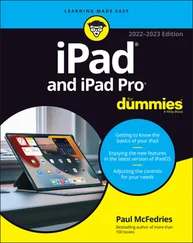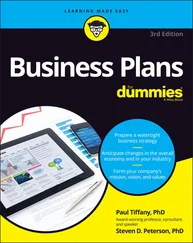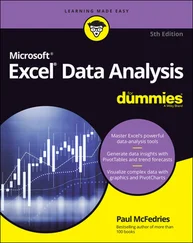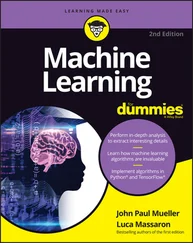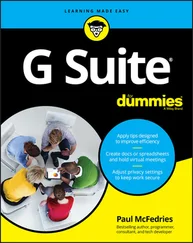John Paul Mueller - Algorithms For Dummies
Здесь есть возможность читать онлайн «John Paul Mueller - Algorithms For Dummies» — ознакомительный отрывок электронной книги совершенно бесплатно, а после прочтения отрывка купить полную версию. В некоторых случаях можно слушать аудио, скачать через торрент в формате fb2 и присутствует краткое содержание. Жанр: unrecognised, на английском языке. Описание произведения, (предисловие) а так же отзывы посетителей доступны на портале библиотеки ЛибКат.
- Название:Algorithms For Dummies
- Автор:
- Жанр:
- Год:неизвестен
- ISBN:нет данных
- Рейтинг книги:3 / 5. Голосов: 1
-
Избранное:Добавить в избранное
- Отзывы:
-
Ваша оценка:
- 60
- 1
- 2
- 3
- 4
- 5
Algorithms For Dummies: краткое содержание, описание и аннотация
Предлагаем к чтению аннотацию, описание, краткое содержание или предисловие (зависит от того, что написал сам автор книги «Algorithms For Dummies»). Если вы не нашли необходимую информацию о книге — напишите в комментариях, мы постараемся отыскать её.
Algorithms For Dummies,
Algorithms For Dummies
Algorithms For Dummies — читать онлайн ознакомительный отрывок
Ниже представлен текст книги, разбитый по страницам. Система сохранения места последней прочитанной страницы, позволяет с удобством читать онлайн бесплатно книгу «Algorithms For Dummies», без необходимости каждый раз заново искать на чём Вы остановились. Поставьте закладку, и сможете в любой момент перейти на страницу, на которой закончили чтение.
Интервал:
Закладка:
Editing cells
Both Colab and Notebook have Edit menus that contain the options you expect, such as the ability to cut, copy, and paste cells. The two products also have some interesting differences. For example, Notebook allows you to split and merge cells. Colab contains an option to show or hide the code as a toggle. These differences give each product a slightly different flavor but don’t really change your ability to use each one to create and modify Python code.
Moving cells
The same technique you use for moving cells in Notebook also works with Colab. The only difference is that Colab relies exclusively on toolbar buttons (refer to in Figure 3-9); Notebook also has cell movement options on the Edit menu. To move a cell, select it and then click the Move cell up or Move cell down buttons as needed.
Using Hardware Acceleration
Even though you won’t need it for the examples in this book, Colab does offer hardware acceleration in the form of a Graphics Processing Unit (GPU) or Tensor Processing Unit (TPU). Both of these special processors offer the ability to process multiple sets of data in parallel at high speed. When working with big data (see Chapter 12) in a machine learning or deep learning environment, a GPU or TPU can make a huge difference in the time required to accomplish a task. The main difference between a GPU and a TPU is that a GPU appears as part of most high-end display adapters today and can double for rendering complex graphics, while a TPU is a custom processor designed by Google specifically for machine learning and deep learning tasks. (There are other differences, but they aren’t important for this book.)
GPU and TPU support are disabled by default in Colab. To enable GPU or TPU support, choose Runtime ⇒ Change Runtime Type. A Notebook Settings dialog box appears. In this dialog box is the Hardware Accelerator drop-down list, from which you can choose None (the default), GPU, or TPU.
Executing the Code
For your code to be useful, you need to run it at some point. Previous sections have mentioned the right-pointing arrow that appears in the current cell. Clicking it runs just the current cell. Of course, you have other options than clicking the right-pointing arrow, and all these options appear on the Runtime menu (the Cell menu in Notebook). The following list summarizes these options:
Running the current cell: Instead of clicking the right-pointing arrow, you can also choose Runtime ⇒ Run the Focused Cell to execute the code in the current cell.
Running other cells: Colab provides options on the Runtime menu for executing the code in the next cell, the previous cell, or a selection of cells. Simply choose the option that matches the cell or set of cells you want to execute.
Running all the cells: In some cases, you want to execute all the code in a notebook. In this case, choose Runtime ⇒ Run All. Execution starts at the top of the notebook, in the first cell containing code, and continues to the last cell that contains code in the notebook. You can stop execution at any time by choosing Runtime ⇒ Interrupt Execution.
 Choosing Runtime ⇒ Manage Sessions displays a dialog box containing a list of all the sessions that are currently executing for your account on Colab. You can use this dialog box to determine when the code in that notebook last executed and how much memory the notebook consumes. Click the trash can icon to end execution for a particular notebook.
Choosing Runtime ⇒ Manage Sessions displays a dialog box containing a list of all the sessions that are currently executing for your account on Colab. You can use this dialog box to determine when the code in that notebook last executed and how much memory the notebook consumes. Click the trash can icon to end execution for a particular notebook.
Getting Help
The most obvious place to obtain help with Colab is from the Colab Help menu. The menu doesn't have a general help link, but you can find it at https://colab.research.google.com/notebooks/welcome.ipynb (which requires you to log into the Colab site). This menu does contain all the usual entries:
Frequently Asked Questions (FAQs): Takes you to a page containing questions that other people have asked.
Search Code Snippets: Opens a pane showing common tasks, such as working with a camera, in which you can search for example code that could meet your needs with a little modification. Clicking the Insert button inserts the code at the current cursor location in the cell that has focus. Each of the entries also shows an example of the code.
Report a Bug: Takes you to a page where you can report Colab errors.
Ask a Question on Stack Overflow: Displays a new browser tab, where you can ask questions from other users. You see a login screen if you haven’t already logged in to Stack Overflow.
Send Feedback: Displays a dialog box with links for locations where you can obtain additional information. If you really do want to send feedback, then you click the Continue Anyway link at the bottom of the dialog box.
Chapter 4
Performing Essential Data Manipulations Using Python
IN THIS CHAPTER
 Using matrixes and vectors to perform calculations
Using matrixes and vectors to perform calculations
 Obtaining the correct combinations
Obtaining the correct combinations
 Employing recursive techniques to obtain specific results
Employing recursive techniques to obtain specific results
 Considering ways to speed calculations
Considering ways to speed calculations
You’ve probably used online tutorials or other methods to learn the basics of the Python language — the arcane symbols you use to communicate with your computer. (If not, you can find good basic tutorials at https://www.w3schools.com/python/ and https://www.tutorialspoint.com/python/index.htm ). However, simply knowing how to control a language by using its constructs to perform tasks isn’t enough to create a useful application. The goal of mathematical algorithms is to turn one kind of data into another kind of data. Manipulating data means taking raw input and doing something with it to achieve a desired result. (This is a topic covered in Python for Data Science For Dummies, by John Paul Mueller and Luca Massaron [Wiley].) For example, until you do something with traffic data, you can’t see the patterns that emerge that tell you where to spend additional money in improvements. The traffic data in its raw form does nothing to inform you — you must manipulate it to see the pattern in a useful manner.
In times past, people performed the various manipulations to make data useful by hand, which required advanced math knowledge. Fortunately, you can find Python packages to perform most of these manipulations using a little code. You don’t have to memorize arcane manipulations anymore — just know which Python features to use. That’s what this chapter helps you achieve. You discover the means to perform various kinds of data manipulations using easily accessed Python packages designed especially for the purpose. ( Chapter 5takes the next step and shows you how to create your own library of hand-coded algorithms.) This chapter begins with vector and matrix manipulations. Later sections discuss techniques such as recursion that can make the tasks even simpler, plus perform some tasks that are nearly impossible using other means. You also discover how to speed up the calculations so that you spend less time manipulating the data and more time doing something really interesting with it.
Читать дальшеИнтервал:
Закладка:
Похожие книги на «Algorithms For Dummies»
Представляем Вашему вниманию похожие книги на «Algorithms For Dummies» списком для выбора. Мы отобрали схожую по названию и смыслу литературу в надежде предоставить читателям больше вариантов отыскать новые, интересные, ещё непрочитанные произведения.
Обсуждение, отзывы о книге «Algorithms For Dummies» и просто собственные мнения читателей. Оставьте ваши комментарии, напишите, что Вы думаете о произведении, его смысле или главных героях. Укажите что конкретно понравилось, а что нет, и почему Вы так считаете.


